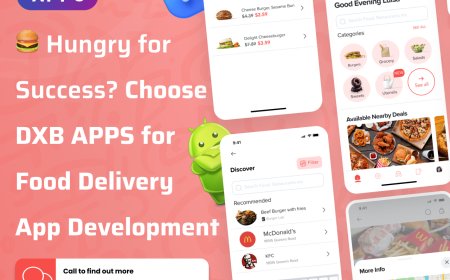Loan Repayment Software: Automating the Future of Loan Servicing and Collections
Loan repayment software automates loan servicing, improves borrower experience, and reduces defaults. Learn how it supports lenders in the digital age.
In todays digital-first lending environment, the importance of streamlined repayment processes cannot be overstated. Whether you're a bank, credit union, fintech lender, or microfinance institution, managing repayments efficiently is vital to your financial health and regulatory compliance. This is where loan repayment software becomes indispensable.
This advanced technology automates the entire post-disbursement process, from calculating interest to collecting payments, tracking delinquencies, generating reports, and notifying borrowers. It not only reduces human error and operational overhead but also improves the borrower experience and reduces the risk of defaults.
In this in-depth article, we explore how loan repayment software works, the key features you should look for, and why its becoming a non-negotiable tool in the modern financial ecosystem.
Understanding Loan Repayment Software
Loan repayment software is a digital platform that enables lenders to manage the servicing of loans through automation and real-time tracking. Its goal is to simplify and standardize the collection of principal and interest payments, penalties, fees, and early payoffs across various types of loans.
A good repayment platform supports all repayment schedules, integrates seamlessly with other systems (like loan origination software, CRMs, or payment gateways), and offers features that enhance efficiency, accuracy, and compliance.
Why Loan Repayment Software Is Crucial in 2025
1. Rising Loan Volumes
The explosion in digital lendingacross personal finance, BNPL, mortgages, and small business credithas led to a surge in active loan accounts. Manual tracking just doesnt scale anymore.
2. Higher Expectations from Borrowers
Todays borrowers expect to manage their loans through apps, receive reminders, and make payments with a few clicks.
3. Regulatory Oversight Is Tighter
Compliance requirements include timely communications, transparent records, and auditable repayment logs.
4. Operational Efficiency is a Must
Cost pressures demand automation. Every manual repayment entry or missed reminder increases risk and costs.
Key Features of Modern Loan Repayment Platforms
1. Repayment Schedule Creation
Enables creation of flexible repayment plansmonthly, weekly, quarterly, or custom schedules.
2. Automatic Payment Processing
Supports various methods including ACH, credit/debit cards, wallets, and mobile money. Autopay can be enabled for seamless recurring payments.
3. Interest and Fee Calculation
Calculates interest using multiple modelsfixed, floating, reducing balanceand applies fees according to lender-defined rules.
4. Delinquency Management
Flags overdue accounts, sends automated reminders, calculates late fees, and escalates based on risk rules.
5. Escrow Handling
Manages taxes, insurance, or service fees alongside the principal/interest paymentsideal for mortgage lenders.
6. Borrower Communication Tools
Includes SMS, email, and push notifications for payment reminders, due date alerts, confirmations, and disclosures.
7. Self-Service Portals
Lets borrowers log in, view statements, download payment history, set up auto-pay, or request payoffs.
8. Reporting & Analytics
Real-time dashboards to monitor cash flow, outstanding amounts, delinquency rates, and compliance health.
9. Compliance Tools
Automatically generates documents for disclosures, audit logs, transaction history, and borrower communication tracking.
10. Integrations
Connects to your LOS, CRM, accounting platform, or third-party payment processor via APIs or built-in connectors.
Loan Types Supported by Repayment Software
| Loan Type | Key Features |
|---|---|
| Consumer Loans | Fixed-term, interest-bearing, with grace periods |
| Mortgage Loans | Escrow support, long amortization, early payoff |
| Student Loans | Grace periods, deferments, flexible payments |
| Auto Loans | Balloon payments, lien tracking |
| Small Business Loans | Complex terms, multi-party involvement |
| Microfinance | Frequent repayments, group loans, mobile collection |
| BNPL & Retail Credit | Short-term, high-volume, real-time updates |
Benefits for Lenders
1. Reduce Default Rates
Payment reminders, automatic scheduling, and digital access help borrowers stay on track.
2. Lower Operational Costs
Eliminates the need for large servicing teams by automating the most time-consuming tasks.
3. Improve Compliance
Tracks every interaction, payment, and communication for audit readiness and regulatory safety.
4. Scale Lending Programs
Serves a larger number of loans without increasing infrastructure or personnel.
5. Access Better Insights
Use real-time data and reporting tools to understand borrower behavior and portfolio performance.
Benefits for Borrowers
-
Transparency: View complete payment breakdowns and account history.
-
Convenience: Pay via web, mobile app, or auto-debit from bank accounts.
-
Notifications: Get alerts before payments are due or if something changes.
-
Control: Make extra payments, close loans early, or adjust methods online.
-
Support: Easier access to customer service via integrated help tools.
Leading Loan Repayment Software in 2025
| Software | Strengths | Ideal Users |
|---|---|---|
| LoanPro | Real-time ledger, configurable APIs | Fintechs, SaaS lenders |
| Tavant VELOX | AI-enhanced servicing | Mortgage, auto, large institutions |
| Mambu | Core banking and repayment | Neobanks, global lenders |
| Nortridge | Rule-driven, robust features | Credit unions, small banks |
| TurnKey Lender | End-to-end automation | MFIs, startups, SME lenders |
Choosing the Right Loan Repayment Software
Questions to Ask:
-
Does it support my loan types and business rules?
-
Can it scale with portfolio growth?
-
How secure is the platform (SOC 2, GDPR, etc.)?
-
Can it integrate with our existing stack (CRM, accounting)?
-
What level of borrower access and customization is offered?
-
Is the vendor known for strong support and documentation?
How to Implement a Loan Repayment System
1. Assess Business Needs
Define what loan products you offer and what repayment logic applies to each.
2. Prepare Your Data
Clean up current loan data, borrower contact info, balances, and schedules.
3. Choose the Right Platform
Shortlist 23 providers, demo each one, and evaluate based on fit and future-proofing.
4. Migrate and Configure
Import your data, set up business rules, map payment workflows, and configure alerts.
5. Train Staff and Test
Run pilot projects and train teams on how to use the platform.
6. Launch and Monitor
Roll out to all users and track results with real-time dashboards and borrower feedback.
Common Pitfalls to Avoid
-
Incomplete Data Migration: Can lead to errors in payments and trust issues with borrowers.
-
Over-Complicating Logic: Start simple, especially for your first implementation.
-
Ignoring Borrower Education: Send walkthroughs and FAQs to ensure adoption.
-
Failure to Integrate Fully: Without system integration, operational silos will remain.
-
Neglecting Mobile Experience: Most borrowers want to manage repayments from their phones.
The Future of Loan Repayment Technology
1. AI-Driven Repayment Plans
Predictive models will suggest personalized payment schedules based on borrower behavior and income patterns.
2. Embedded Repayment in Everyday Apps
Repayment options will appear directly in digital wallets, ecommerce apps, payroll portals, and more.
3. Real-Time Cross-Border Payments
Platforms will integrate with SWIFT gpi, FedNow, and other real-time payment networks for international lending.
4. Voice and Chatbot Interfaces
Voice assistants and AI chatbots will handle account queries, payoff requests, and payment confirmations.

































